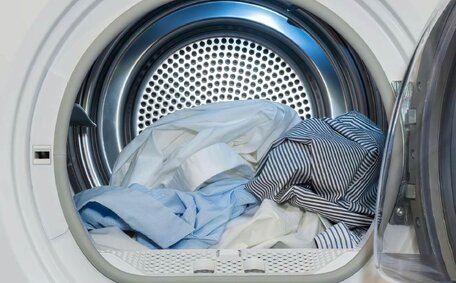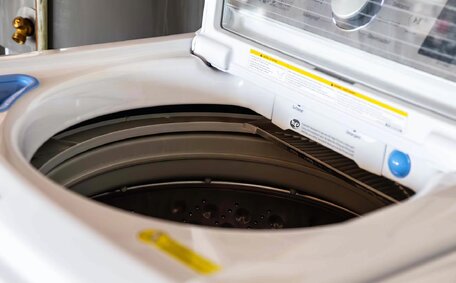Planning Your Gas Cooktop Installation
Installing a new gas cooktop requires some planning and preparation to ensure a smooth and safe process. Installing a new gas cooktop requires some planning and preparation to ensure a smooth and safe process.
The first step is deciding on the right gas cooktop model for your needs. Consider the number of burners, size options, and special features like griddles or wok burners. Measure to ensure it will fit the existing cutout or plan modifications.
You’ll need to arrange for the proper tools for the job. You’ll need to arrange for the proper tools for the job. Safety gear like gloves and eye protection are a must.
Have on hand tools to make the countertop cutout like a jigsaw, drill, and router. Have on hand tools to make the countertop cutout like a jigsaw, drill, and router.
Make sure you have all the materials for the gas and electrical connections. This includes the gas line shutoff valve, rubber gas line, pipe fittings, and wire nuts. Read the installation manual so you thoroughly understand the entire process before getting started.
With the proper planning, you’ll be able to safely install your new gas cooktop with minimal hassle. Focusing on the key preparation steps will lead to a smooth installation.
Electrical and Gas Supply Requirements
Installing a gas cooktop requires proper electrical and gas supplies to ensure safe and efficient operation. An electrical outlet should be located within 6 feet of the cooktop cutout location to power the ignition and controls.
This outlet needs to be on a dedicated 15-amp circuit. Use 14-gauge wiring with a ground connection.
The gas supply line should be 1/2 to 3/4 inch black steel pipe. The gas supply line should be 1/2 to 3/4 inch black steel pipe. The gas supply line should be 1/2 to 3/4 inch black steel pipe. Most cooktops require natural gas at 4-5 inches of water column pressure.
Make sure this gas supply line provides the proper gas type and pressure for the cooktop model.
Having the right electrical and gas supply with a conveniently located gas shutoff valve is a critical safety factor. Having the right electrical and gas supply with a conveniently located gas shutoff valve is a critical safety factor.
With the right connections in place, your cooktop can provide safe and reliable performance.
Proper Clearances
Some models may require slightly more. Measure to make sure cabinets are high enough.
There should be a minimum of 30 inches clearance between the cooktop and overhead combustible surfaces like cabinets. There should be a minimum of 30 inches clearance between the cooktop and overhead combustible surfaces like cabinets. Maintaining proper clearances is crucial when installing a gas cooktop for safety and proper ventilation.
The cutout opening should measure within 1/8 inch of the cooktop dimensions. This helps ensure proper airflow and prevents overheating.
Allow a minimum of 2 inches clearance on each side from cutout opening to adjacent walls or cabinets. The front edge of the countertop should have an overhang clearance of at least 1/4 inch but no more than 3/4 inch.
Consult your appliance manual for the exact clearance recommendations. Carefully measuring and cutting the opening to achieve proper clearances will lead to safe and effective performance of your new gas cooktop.
Preparing the Countertop
Before installing your new gas cooktop, proper preparation of the countertop is essential. Before installing your new gas cooktop, proper preparation of the countertop is essential. Before installing your new gas cooktop, proper preparation of the countertop is essential.
Allow for the minimum clearances specified in the manual. Use a straightedge to draw straight cut lines.
Use a drill to bore starter holes inside the corners of the cutout area before making cuts with a jigsaw.
Make interior cuts first, working toward the outer edges. For solid surface counters, use a router and template for smooth edges. Make interior cuts first, working toward the outer edges. Finish by vacuuming out debris before setting the cooktop into place.
Apply foil tape along the underside perimeter of the cutout to prevent heat damage to the countertop edges.
Avoid overlapping the tape to prevent gas blockages. The countertop is now ready for the new cooktop installation. The countertop is now ready for the new cooktop installation.
Installing the New Gas Cooktop
With proper planning and preparation, you are now ready to install your new gas cooktop.
First, check the burner caps and grates are removed for safe handling. First, check the burner caps and grates are removed for safe handling. First, check the burner caps and grates are removed for safe handling.
Remove the cooktop and apply a bead of non-hardening sealant around the marked line to prevent leaks. Set the cooktop back into position and press down firmly to adhere the sealant. Insert any mounting brackets or screws specified in the manual to secure in place.
Attach the gas line to the cooktop inlet with a flare union adapter. Make sure the gas line is aligned without kinks or stress.
Use Teflon tape on the threads to prevent leaks. Tighten securely with wrenches but do not overtighten.
Connect the electrical plug to the receptacle underneath the cooktop. Make sure wires are neatly positioned away from the burners. Install the regulator on the gas line if included with the new gas cooktop model.
Turn on the gas supply and use a leak detector fluid to check for any small leaks at the connections. The new gas cooktop can now be safely used once fully tested.
Tighten joints if needed. Check burner ignition and operation. Reinstall caps, grates and all accessories.
Connecting the Gas Supply Line
Connecting the gas supply line is a crucial step when installing your new gas cooktop. Screw the end connector onto the gas inlet port at the back of the cooktop, tightening with adjustable wrenches.
Make sure the gas supply is turned off at the shutoff valve before beginning. Use only regulation-approved pipe and fittings rated for gas service. Apply Teflon tape to the threaded end of the gas connector. Use only regulation-approved pipe and fittings rated for gas service.
Attach the other end of the gas connector to the gas supply line. Make sure there are no kinks and the connector is aligned properly without stress. Use joint compound on the threads and tighten securely with wrenches. Turn on the gas supply and check for leaks by brushing on leak detector solution.
Look for bubbles and tighten any leaky connections. Wipe away excess solution before testing ignition.
Installing your new gas cooktop requires carefully connecting the gas supply line to ensure safe and proper fuel supply. Following manufacturer instructions for attaching the fittings and checking for leaks will result in reliable performance.
Testing for Gas Leaks
After connecting the gas supply line, it is crucial to test for any gas leaks before using your new gas cooktop. Make sure all control valves are off and use leak detector solution or soapy water on a brush to check the connections. Apply the solution liberally around joints, valves, and fittings.
Look closely for any growing bubbles which indicate escaping gas. Tighten joints and connections with wrenches as needed to stop leaks. For smaller leaks you may hear a hissing sound.
Wipe connections dry when complete. Ensure you have good ventilation when testing.
Perform a final ignition test by turning on each burner to ensure proper flame operation. Your new gas cooktop is now ready for use after successfully completing the gas leak testing.
While taking the time to check for leaks may seem tedious, this step is vital for preventing dangerous gas leaks and ensuring your safety.
Finishing the Installation
The final step after installing your new gas cooktop is properly assembling all the components and testing ignition. Start by replacing the burner caps, making sure they are aligned correctly over the burners.
Check that any burner grates or cooktop grills fit properly. Wipe down the cooktop surface to remove any dust or debris.
Before first use, test ignition on each burner. Push in and turn the knobs to the lite position.
You should hear the igniter clicking and see a flame emerge from the burner head. Adjust the flame by turning the knob to the desired heat level. Make sure flames are blue and steady, not overly yellow or rising unevenly.
Inspect the overall fit of the cooktop in the countertop cutout once more. Refer to the user manual and familiarise yourself with all cooktop features and operation. Inspect the overall fit of the cooktop in the countertop cutout once more.
Apply additional sealant if any gaps are visible. Remove any installer’s labels but leave warning labels intact.
Installing a gas cooktop requires care and safety checks to ensure proper functioning. We specialise in all aspects of domestic and commercial plumbing.
The experts at Oatlands Plumbing based in Oatlands, Sydney are available if you need assistance installing or servicing your gas appliances. Whether you need a new cooktop installed or your current one repaired, contact us today to schedule a consultation.






